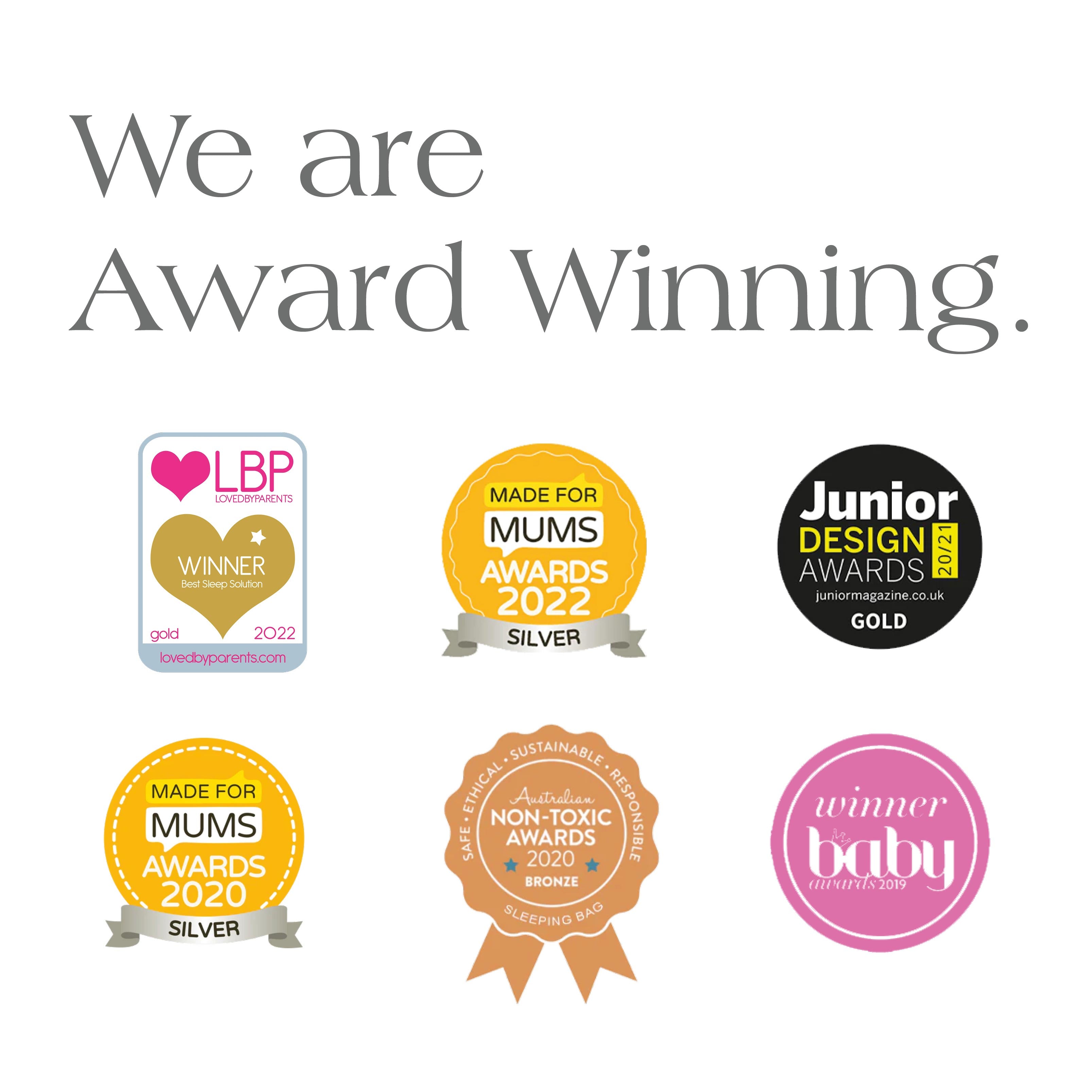Which Tog Sleeping Bag Do I Need For My Baby?
Being a new parent can be a busy time and sometimes it can feel like you’ve got a lot of things to think about.
One of the many questions that may be on your mind, especially around this time of year is which tog sleeping bag or sleep suit you need for your baby.
At Merino Kids, we refer to togs as weights so, in this blog post, we'll shed some light on the best option for your little one and solve any questions you have on how to choose one. As after all, you want your baby to be safe, warm and relaxed for a good night’s sleep.

The Benefits
There are many reasons why parents and their little ones love using a sleeping bag for nap times and overnight sleep. For example, they help to keep your baby at a constant temperature all night which ensures a better night’s sleep. They also allow little ones to move freely in their sleep without getting tangled up in a normal blanket which can lead to overheating or obstructing their airways.
Regulating Temperature
The Lullaby Trust suggests the ideal sleeping temperature for babies is between 16-20 ֯C, with babies under 12 months being particularly vulnerable when it comes to overheating.
With this in mind, choosing the right tog or weight of sleeping bag for your baby is important. Firstly, you should make sure that the room temperature where baby is sleeping - whether that is your room or their own - is at the correct and comfortable level for them. This can be monitored by a room thermometer or many baby monitors now feature temperature displays.

The Right Tog
Typically when finding the right tog of sleeping bag, the higher the tog of the bag, the thicker the material will be. Similarly, at Merino Kids our weight system categorises our sleeping bags through its wadding. For example, our Winter weight Go Go sleeping bag features pebble-shapped wadding throughout which provides another layer of our famous merino wool.
Choosing the correct tog - or weight - for your baby depends on where you live and the temperature throughout the whole year. Although one of the many perks of our Merino Kids sleeping bags is that they are much more effective to use in both cooler and warmer environments thanks to the natural temperature regulation properties of merino wool.
Whereas, for other fabric tog sleeping bags, you may need to have a selection to alternate throughout the year which can add up in cost and become more confusing to dress with.
These are the five generic recommended tog ratings to dress your baby for bed based on temperature:
- Room under 14 degrees: Use a 3.5 tog, with a cotton long sleeved bodysuit and sleepsuit. It is unlikely you will ever use a tog of this thickness unless you are in a very cold climate.
- Room under 16 degrees: Use a 2.5 tog bag with a cotton bodysuit and sleep suit.
- Room at 17-21 degrees: Use a 2.5 tog with a cotton bodysuit.
- Room at 22 to 25 degrees: Use a lightweight 1.0 tog to 1.5 tog with a cotton bodysuit.
- Room above 25 degrees: Use a 0.5 tog sheet or muslin bag and a short-sleeved bodysuit.

These are our three Merino Kids recommended weight ratings to dress your baby for bed based on temperature:
- Room 16 - 20 degrees: Use a Winter Weight sleeping bag, equivalent to 2.3 - 3.5 Tog.
- Room 16-22 degrees: Use a Duvet Weight sleeping bag, equivalent to 1.4 - 2.5
- Room 17 - 27 degrees: Use a Standard Weight sleeping bag, equivalent to 0.5 - 1.8
As you can see, our weight system sleeping bags encompasses a wider temperature range than its tog counterparts.
Sleep advice
Despite this guide, it is still important to keep a close eye on your little one as the temperature rises. You can check your baby’s temperature by feeling the skin on the back of their neck and if they feel hot or damp in a tog sleeping bag, we’d suggest removing a few layers to cool them down.
On the other hand, you'll find that one of the many benefits of our Merino Kids weight sleeping bags is that merino wool is naturally moisture-wicking, so a little one stays dry and comfortable all night long.
To ensure your little one has a sleeping bag that fits comfortably, check that the arm holes fit snug enough so their hands can’t get inside the bag, and the neck hole is not so big that their head could slip down but loose enough to not be uncomfortable.
With these guidelines, buying your baby’s sleeping bag should be as easy as dozing off surrounded in merino wool...







